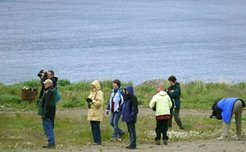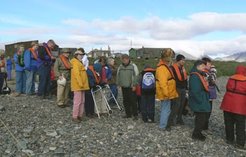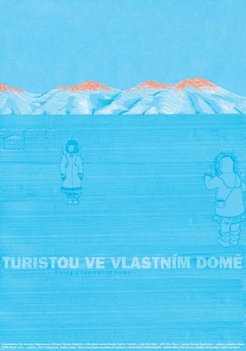Ethnotourism in the far north of Russia: transformation of lifestyles on the microlevel

The outlined research project is aimed to analyse social dynamics created by the tension between articulated and unspoken (and visible and invisible) in culture. In this context lifestyle is not perceived just as a practice publicly demonstrated, but rather as a very individually reflected experience.
The departing point of the study is indigenous tourism in build-up with the focus on the coastal settlements of Chukchi Peninsula which provide cultural tours for incoming cruise tourists. The settlement Novoe Chaplino is planned to become one of the central tourist site on the coast where substantial part of the community is supposed to be involved in such sort of endeavour.
In this study I would like to examine the conditions and limitations of changing a place into a tourist site and to reveal how different community members respond differently to such venture, how and if they engage in the process of making their home a place for short visits of tourists. The question of external, internal, and intimate use of culture is again at stake here. The project of making the settlement a tourist site involves diverse understanding of what shall or shall not be considered to be suitable for external representation of culture. Such project is contradictory in its essence (implying pre-Soviet, Soviet, post-Soviet, regional, and ethnic understanding of traditional culture), as well as restrictive (not everything can be demonstrated or shown). Therefore I shall assume that constraints between collective and individual, outspoken and hidden attitudes on the issue what traditional culture is might take place here. These constraints shall be able to disclose how individuals reflect social imperatives and how they as individuals experience, redefine, and transmit culture, in particular, how they choose and practice their lifestyles.

The link between lifestyle and identity is evident here. However, my main concern is not identity as a property ascribed or acquired in social life; I am concerned with intimate structure of culture, which carry the trait of „social“ and „cultural“, but can be fully conceived and articulated just by individuals. The shift from identity to subjectivity shall be helpful in the analysis of those cultural practices that arise in contradictory or ambiguous social situations such as the one under scope here.
The study introduces the notion that tourist site is constructed by the sight, both of a tourist and of a local host. Drawing on Bill Nichol’s term “ethnotopia”, it is ironically stated that tourist’s epistemological appropriation of other’s culture drawn from his acceptance of a place as a tourist site, is more than from the presence of “observable” initiated by the absence of “visible”.

Methodological framework comprises of Edward Sapir’s concept “intimate structure of culture”, David MacDougall’s perspective on social aesthetics, and Maurice Merleau-Ponty’s phenomenological insights on body. Within this context I am particularly interested social aesthetics of life in the settlement, which prepares for the tourist project. I am interested in different body arrangement and choreography, space use, and overall visuality of the whole process. In this part of the study I plan to use video camera and apply visual research methods. It is in these non-verbal articulations of social life where some other kind of anthropological knowledge can be revealed. The term „lifestyle“ implies affiliation to different strategies or means of expression; it is therefore a necessity that visual, haptic, kinaesthetic, and olfactory aspects of social life will be taken into consideration.
This project is a part of the Collaborative Research Project of Siberian Studies Centre of Max Planck Institute for Social Anthropology titled “Conditions and Limitations of Lifestyle Plurality in Siberia” and designed by Dr. Joachim Otto Habeck (Working paper No. 104).
Additional part of the research project is represented by the ethnographic film Being a Tourist at Home (date of release October 2009) and ethnographic - interactive media exhibition Different Colours of White (planned for 2011).


